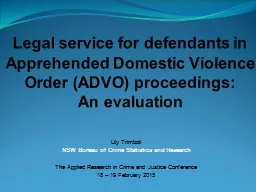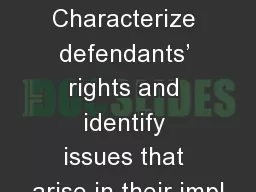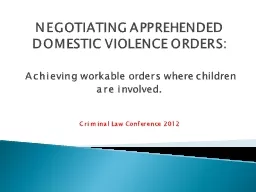PPT-Legal service for defendants in Apprehended Domestic Violen
Author : trish-goza | Published Date : 2015-12-02
An evaluation Lily Trimboli NSW Bureau of Crime Statistics and Research The Applied Research in Crime and Justice Conference 18 19 February 2015 BACKGROUND Domestic
Presentation Embed Code
Download Presentation
Download Presentation The PPT/PDF document "Legal service for defendants in Apprehen..." is the property of its rightful owner. Permission is granted to download and print the materials on this website for personal, non-commercial use only, and to display it on your personal computer provided you do not modify the materials and that you retain all copyright notices contained in the materials. By downloading content from our website, you accept the terms of this agreement.
Legal service for defendants in Apprehended Domestic Violen: Transcript
Download Rules Of Document
"Legal service for defendants in Apprehended Domestic Violen"The content belongs to its owner. You may download and print it for personal use, without modification, and keep all copyright notices. By downloading, you agree to these terms.
Related Documents














